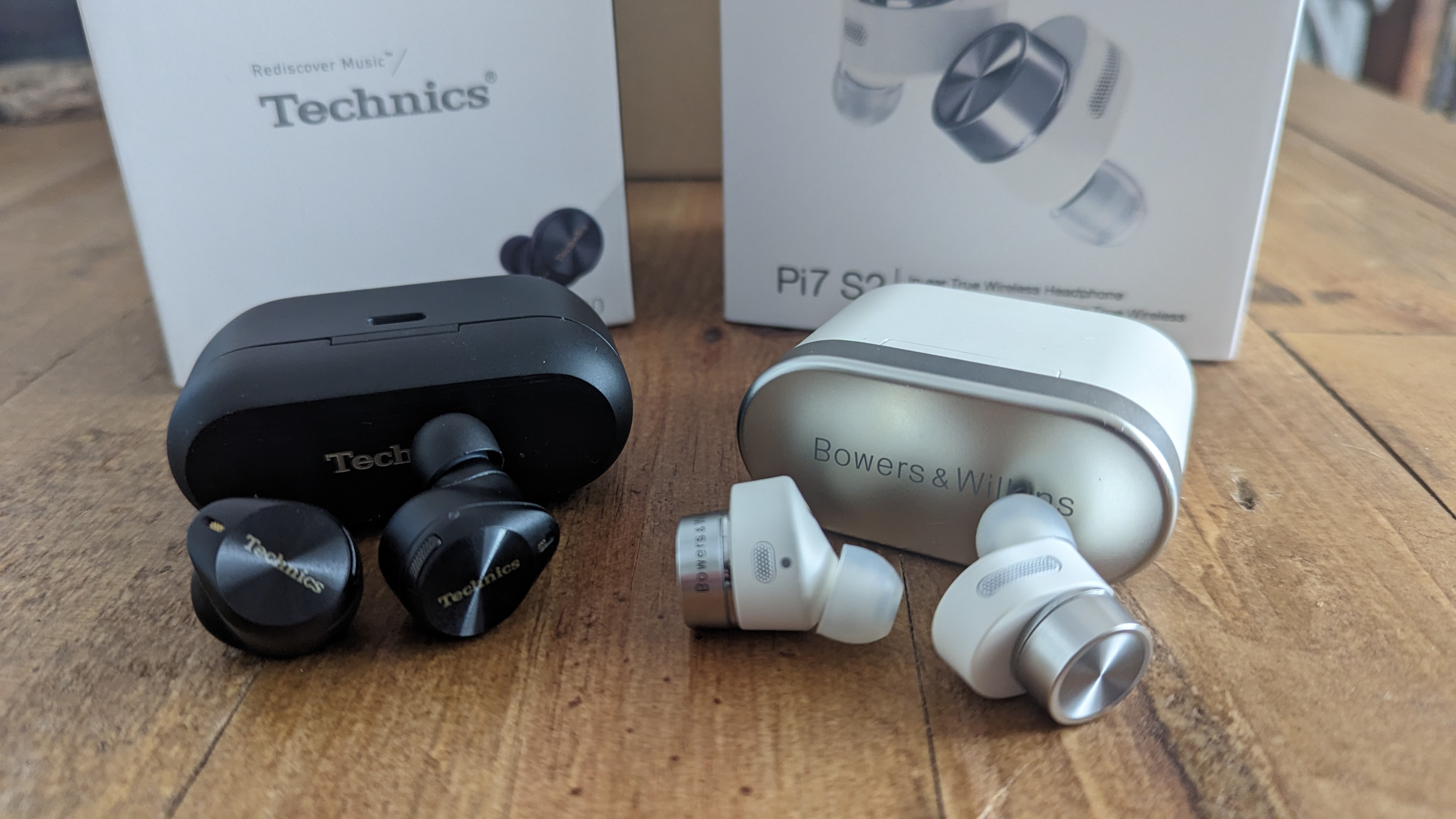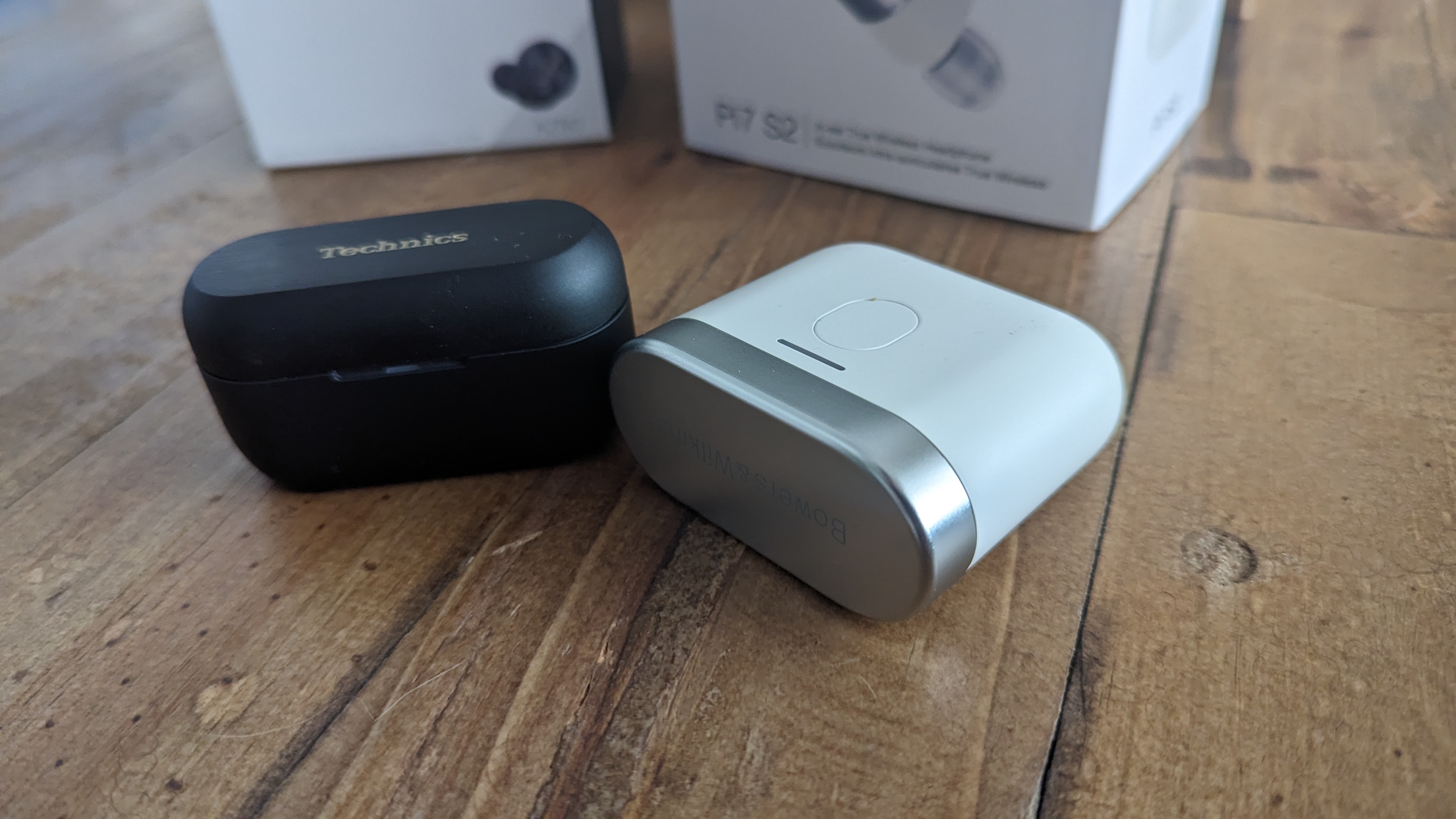
“Is it worth spending $300 on a pair of wireless earbuds?" This is the subject of more than a few messages from readers I’ve received this year – and it’s a good question, especially when you look at the state of the wireless earbuds market.
Over the first six months of 2023, there’s been a marked increase in the number of “premium” sets of wireless earbuds from traditional hi-fi brands passing through our test rooms. Eager to do some investigative audio journalism and help readers answer this question I’ve spent the past week checking two of the biggest buds we’ve reviewed this year – the £349 / $399 Bowers & Wilkins Pi7 S2 and £259 / $299 Technics EAH-AZ80.
Here’s my advice.
Why some earbuds are more expensive
At What Hi-Fi? we always put sound quality and performance per pound/dollar at the forefront of our buying advice. But, with this in mind, wireless earbuds are a bit of a weird class of headphones for serious music listeners.
This is because, by their nature, they’re a little different from the cabled audiophile cans we test, such as the Sennheiser HD 660S2 (£499 / $599) or more high-end Yamaha YH-5000SE (£4799 / $5000) we reviewed earlier in May. Unlike traditional headphones, they have multiple different target users, ranging from runners to casual music fans who only need them for the morning commute.
On top of that, their small form factor and wireless functionality mean that the increases in price can often be the result of non-audio features that have been added, like wireless charging, multi-point connectivity or specific codec support. This is a markedly different approach to audiophile headphones where pretty much all the engineering goes into features to improve sound quality. Even using the “audio” focussed Pi7 S2 and EAH-AZ80, which are being marketed directly to serious music fans, this is the case.
For example, one of the biggest features I’ve enjoyed on the Technics is the addition of three-way multipoint. This is a clever feature that lets you quickly switch between sources. As a person who listens to music when cooking, but then switches to watching some CrunchyRoll on his tablet, while his better half finishes an episode of Peaky Blinders on our main TV, the feature is a godsend that let me switch devices without any faff.
The other big thing that’s noticeable is the parts and materials used. As a person who’s reviewed everything from £35 / $50 Kitsound true wireless all the way up to the premium B&W buds over the years, this is one of the biggest things you usually notice between price points.
There’s no getting around the fact both the AZ80 and Pi7 S2 are a cut above cheaper pairs when it comes to design. Unlike many cheaper pairs though, both have a wonderfully premium feel and are built of premium metal, rather than the cheap-feeling matte plastic you find on many mid-range and budget wireless earbuds.

Does paying more mean better audio quality?
But electronics and materials aside, answering the big question of “does paying more mean better audio” is complicated. The answer varies from product to product, but in this particular limited case study, it's hard to justify the extra outlay compared to our favourite all-rounders.
The AZ80 are cheaper than the Pi7 S2, but during my checks, they both offer incredibly different audio profiles. This is no surprise as, even on paper, there are significant differences. The Technics supports Bluetooth 5.3, while the Bowers and Wilkins use the older Bluetooth 5.0 – this is why they don’t feature the AZ80’s multipoint and in my experience don’t have as long wireless range. However, the Technics, while supporting Sony’s LDAC codec, don’t work with the more common Qualcomm aptX, which the Bowers & Wilkins do.
In the real world, listening to music on Tidal and Spotify and watching videos on Disney Plus, CrunchyRoll and Netflix over the past week, the differences in sound are night and day between the two.
The Pi7 S2 are very good and better than many of the more affordable sets I’ve listened to over the years when it comes to refinement and clarity. As we noted in our Pi7 S2 review, the buds deliver a nicely clear, detailed, spacious sound. Listening to textured, multi-layer tracks from The Cure and attacking, rhythmically complex neo-classical arrangements from Philip Glass, the sound produced is incredibly clean and open. They're impressive in those respects, but they're not all-rounders.
But I actually favoured the sound from the Technics in most instances. Running the two head-to-head I found the AZ80 offered a wonderfully neutral, more accurate sound, that felt more authentic and textured on many of the test tracks I threw at the two buds. The midrange in Bill Evan’s Peace Piece held a more distinctive place in the sound, that felt more separated from the twinkling high notes. BB King’s husky voice had a textured quality that, while present on the Pi7 S2, wasn’t as pronounced. Neither offered perfect audio, but I have undeniably been reaching for the Technics more as a result.
One particular quibble I have with the Technics is that their neutral tone can sometimes impact the audio of more aggressive or bass-heavy tracks. The opening boom of Nine Inch Nails We’re In This Together Now didn’t have the punch-you-in-the-face menace and impact it should, for example.
The bottom line
Even in this limited test, the fact is paying more for a set of earbuds isn’t an automatic guarantee you’ll get a better product. The pricey Bowers & Wilkins Pi7 S2 received three out of five stars in our review, while the Technics EAH-AZ80 fared better with a four-star rating. Neither of these pairs made it into our best wireless earbuds guide.
But does that mean you shouldn’t ever spend $300 or more on a pair of wireless earbuds? Not necessarily. There are flagship pairs that cost nearly as much, which we have given five-star ratings to for their overall excellent performance per pound/dollar. Specifically, at the top end of the market, we currently recommend the Award-winning Bose QuietComfort Earbuds II (£280 / $299) and the five-star Apple AirPods Pro 2 (£249 / $249) – which both offer superb audio quality and ANC quality for the money.
Instead, this particular head-to-head should act as proof that, like any category, price isn’t indicative of quality, and whenever you start shopping you should research the specific product you are interested in and not just assume spending more will get you the best results.
MORE
These are the best headphones we've tested
Check out our pick of the best wireless headphones
These are the best portable music players we've reviewed







